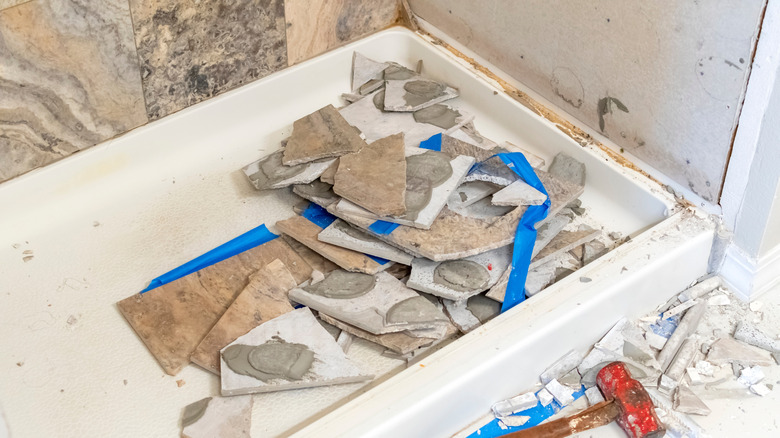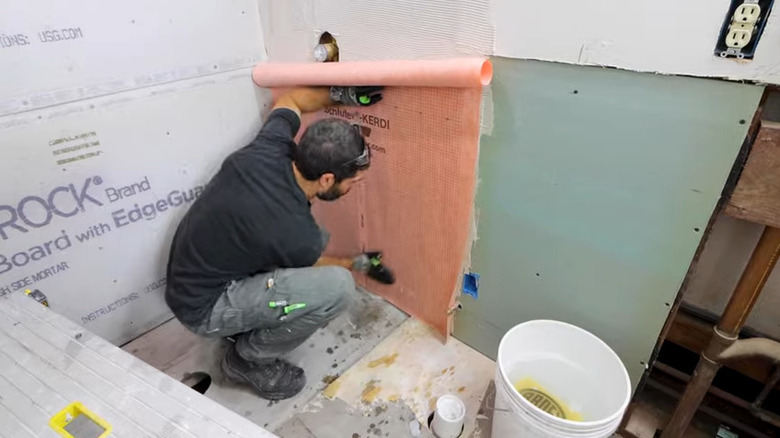Avoid This Huge DIY Mistake In Your Shower And Thank Us Later
We may receive a commission on purchases made from links.
Armed with YouTube tutorials and a few tools, DIYers are a bold bunch. While it's easy to admire the adventurous spirit of people who want to tackle their own home renovations, projects like tiling a shower are a little more complicated than they first appear. Even if you've completed some beginner tile jobs, such as a kitchen backsplash or bathroom wall, you may find yourself in over your head if you take on a shower tile project. That isn't to say that DIYers can't tile a shower; it just means that you shouldn't make the mistake of expecting it to be as simple as other tile projects around the house.
If you're wondering how much more complicated a shower tile project can be, let's consider what actually makes this project different. Unlike a kitchen backsplash, a shower has to perform under constant exposure to moisture and humidity. Every layer beneath the tile supports this role, from the slope of the shower pan to the waterproof membrane. It's not just about getting the tile installation right — you have to create a watertight system that prevents leaks and protects the floor and walls behind the tile.
To further complicate shower tiling, you're dealing with corners, built-in niches for shampoo and soap, and sometimes multiple levels or accent features. To get it right, there are several tips and tricks for installing shower tiles that can help you avoid major mistakes.
What DIYers need to know about shower tile installations
No two shower tile projects are exactly the same, and there are several approaches that can achieve successful results. However, some areas require extra attention. In particular, the shower floor is one of the most important parts of the project, and unless you're tiling a tub surround, it's worth doing some research to determine the best material to use for your shower tray.
Since tiles and grout aren't completely waterproof on their own, everything must be sloped to ensure drainage, with a properly installed waterproof membrane on all surfaces. Pay special attention to corners, seams, and niches to ensure a watertight installation. Then, complete a flood test to confirm your shower is fully sealed before tiling. Whether you choose one of the popular waterproof membrane materials or a waterproof coating like Laticrete's Hydro Ban, there are several methods to consider, each with advantages and drawbacks.
Selecting the right materials for a shower tile installation is another key to successful installations. For walls, use tiles rated for wet areas, and for shower floors, choose tiles with a higher DCOF (dynamic coefficient of friction) rating to help prevent slips. Avoid grouting mistakes when DIYing a tile installation by choosing the right type and color of grout for your project. Epoxy grout is the best type for shower installations since it is waterproof. By selecting the best materials and following the manufacturer's instructions, a shower can be a rewarding and long-lasting tile project. However, unless you get it right, installing the tiles in your shower yourself could be your biggest DIY mistake. So, it might just be better in the long run, to leave it to the experts.

